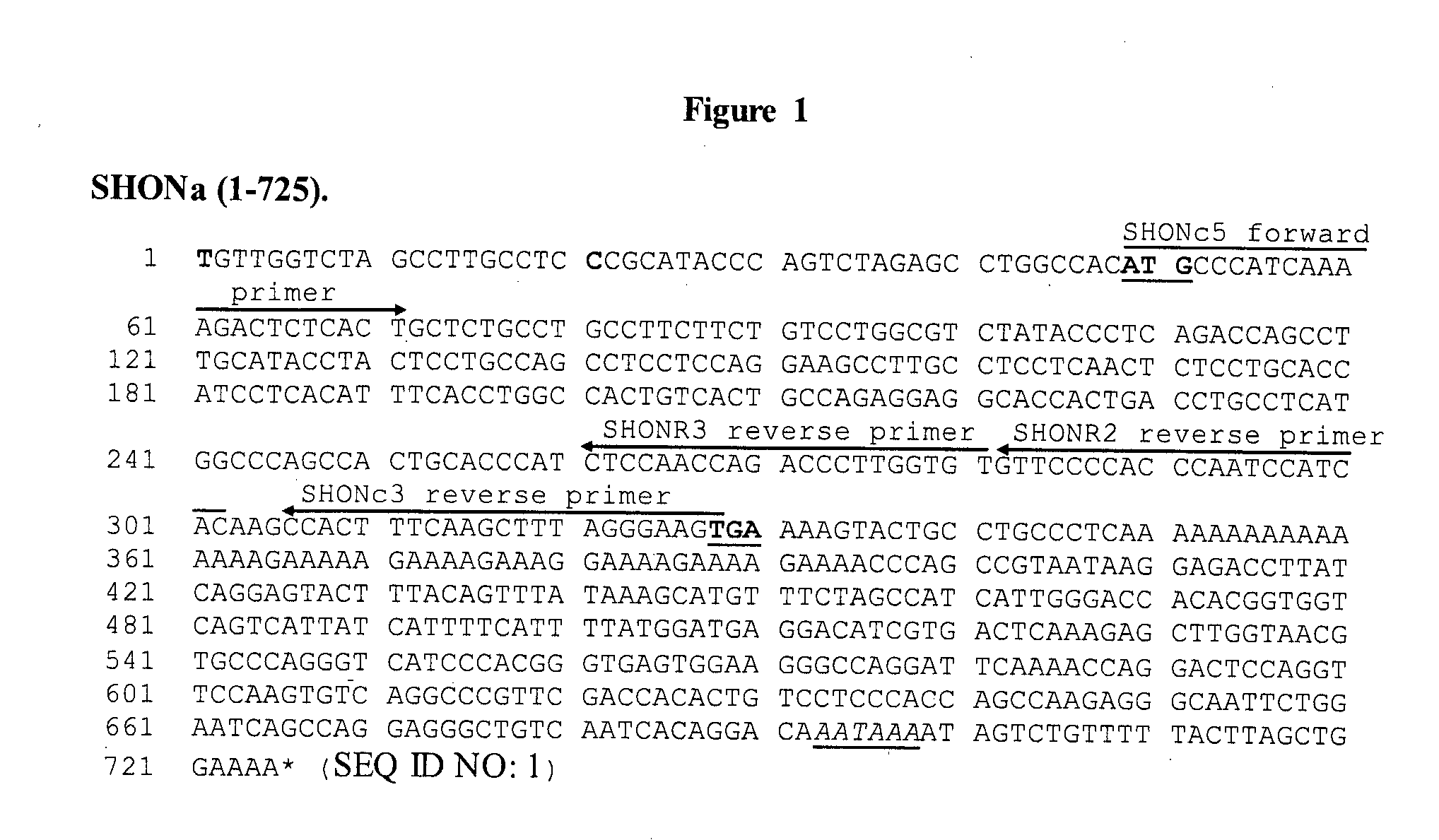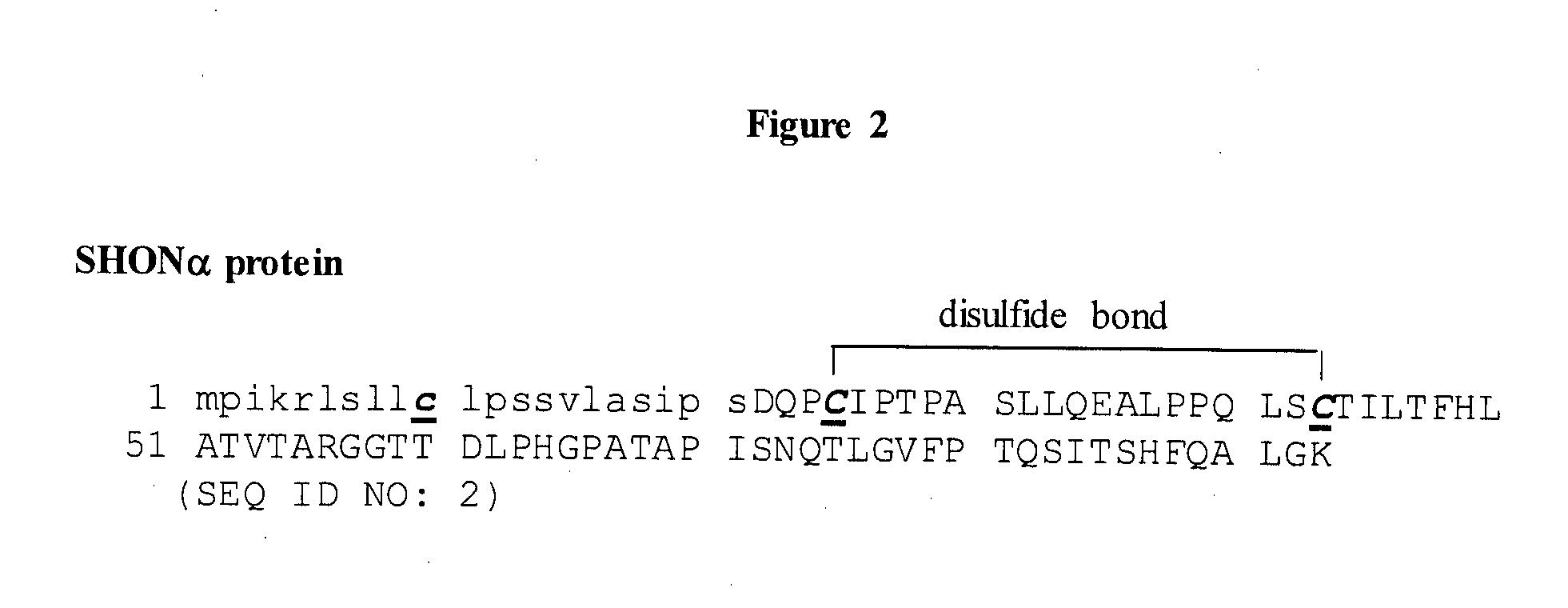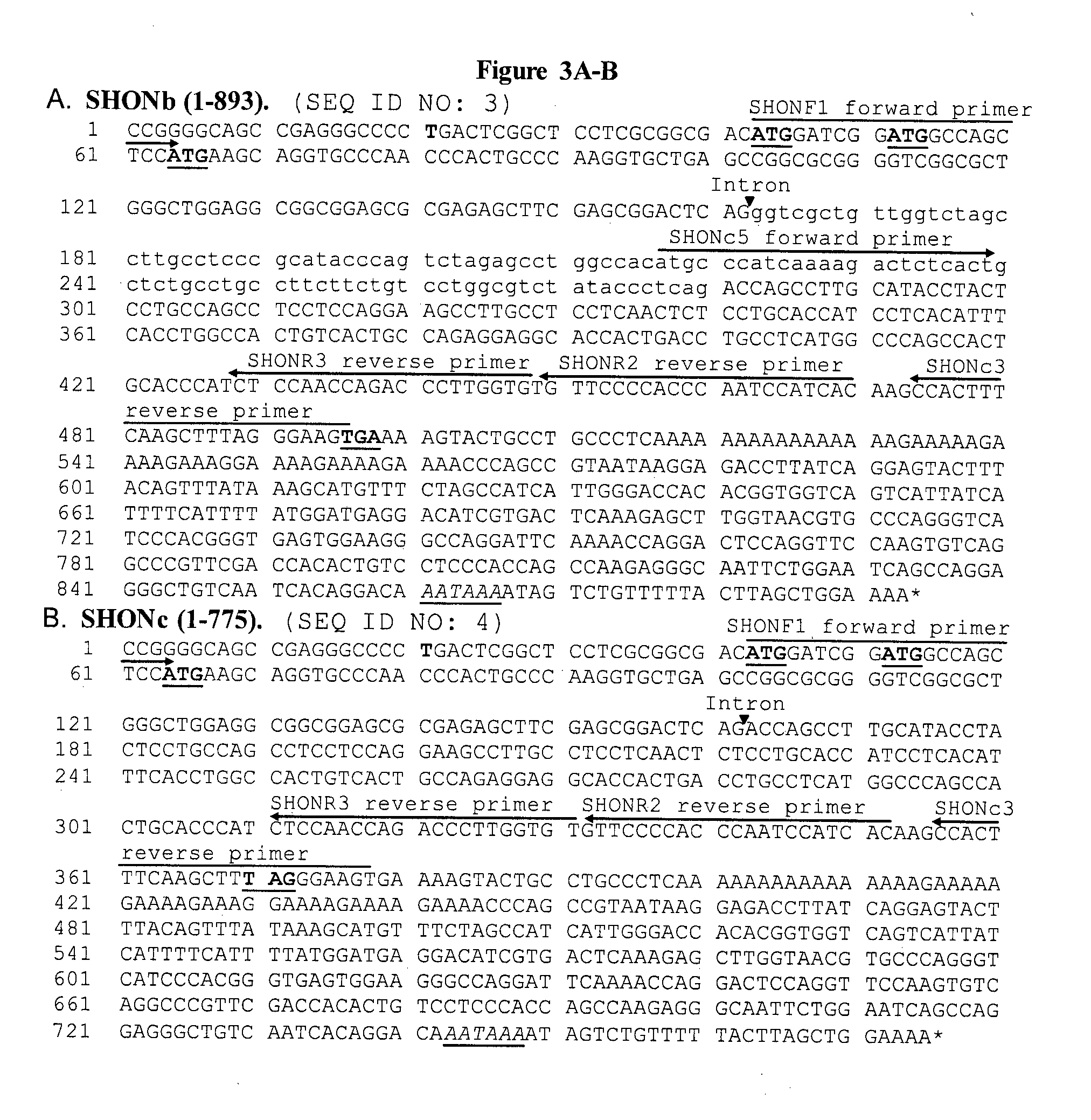Shon as a prognostic biomarker for cancer and as a predictor of response to endocrine therapy
a prognostic biomarker and cancer technology, applied in the field of biotechnology, cancer cell biology and molecular medicine, can solve the problems of insufficient evidence, lack of good predictive biomarker and endocrine resistance, and insufficient accuracy of prediction accuracy of er, so as to promote cell proliferation, colony formation, survival, migration and invasion of cancer cells, and improve the effect of survival ra
- Summary
- Abstract
- Description
- Claims
- Application Information
AI Technical Summary
Benefits of technology
Problems solved by technology
Method used
Image
Examples
example 1
Materials and Methods
Cell Culture
[0145]The normal but immortalised human mammary epithelial cell line MCF10A as well as all the carcinoma cell lines were obtained from the American Type Culture Collection, including lung cancer (A549 and H1975), stomach cancer (AGS and MKN-45), prostate cancer (DU145, PC3 and LnCap), endometrial cancer (RL95-2 and AN3), breast cancer (MCF-7, T47D, BT474, BT459 and MDA-MB-231), and ovarian cancer (Ovca4). All were cultured in conditions as recommended, except that the MCF-7 cell line was cultured in RPMI 1640 medium supplemented with 10% heat-inactivated foetal bovine serum (FBS), 100 units / ml penicillin, 100 μg / ml streptomycin, and 2 mM L-glutamine in a humidified incubator in 5% CO2 at 37° C.
Plasmid Constructs
Mammalian Expression Plasmids—
[0146]The coding sequence for full-length human SHON α (FIG. 1) and (FIG. 3A) were cloned into the mammalian expression vector pIRESneo3 (Invitrogen, Life Technologies), designated pIRESneo3-SHONα and pIRESneo3-SH...
example 2
Results
Observations and Discussions
Identification of SHON
[0177]PIKR2786 (Genentech UNQ ID: UNQ2786) represented by an EST (GenBank accession number AY358103) was originally identified, through bioinformatic analysis, as a potential secreted and trans-membrane protein from a large-scale effort to identify human secreted and trans-membrane proteins (Clark et al., 2003). However, its biological function is undetermined. Sequence homology searches using NCBI BLAST revealed that UNQ2786 belongs to a hominoid-specific gene family with no known orthologs outside the primate lineage. We have demonstrated that UNQ2786 is a secreted protein and is a human mammary epithelial oncogene and have thus renamed it as SHONα.
[0178]To identify the full length. SHONα mRNA we carried out 5′RACE (rapid amplification of 5′ complementary DNA ends) analysis, to extend the 5′ end sequence of the EST AY358103, on mRNA isolated from the mammary carcinoma cell line, MCF-7. We did not identify additional upstream...
example 3
Production of Mouse SHON Monoclonal Antibodies
[0210]Mouse monoclonal SHON antibodies were produced from SHON antigen using 1) synthetic SHON peptides GGTTDLPHGP, PATAPISNQT, NQTLGVFPTQ and PTQSITSHFQ by Abmart (Shanghai) Co. Ltd; and 2) the purified GST-SHONα fusion protein by Biomedical Science institute, A*STAR, Singapore.
PUM
| Property | Measurement | Unit |
|---|---|---|
| Molecular weights | aaaaa | aaaaa |
| pH | aaaaa | aaaaa |
| concentration | aaaaa | aaaaa |
Abstract
Description
Claims
Application Information
 Login to View More
Login to View More - R&D
- Intellectual Property
- Life Sciences
- Materials
- Tech Scout
- Unparalleled Data Quality
- Higher Quality Content
- 60% Fewer Hallucinations
Browse by: Latest US Patents, China's latest patents, Technical Efficacy Thesaurus, Application Domain, Technology Topic, Popular Technical Reports.
© 2025 PatSnap. All rights reserved.Legal|Privacy policy|Modern Slavery Act Transparency Statement|Sitemap|About US| Contact US: help@patsnap.com



